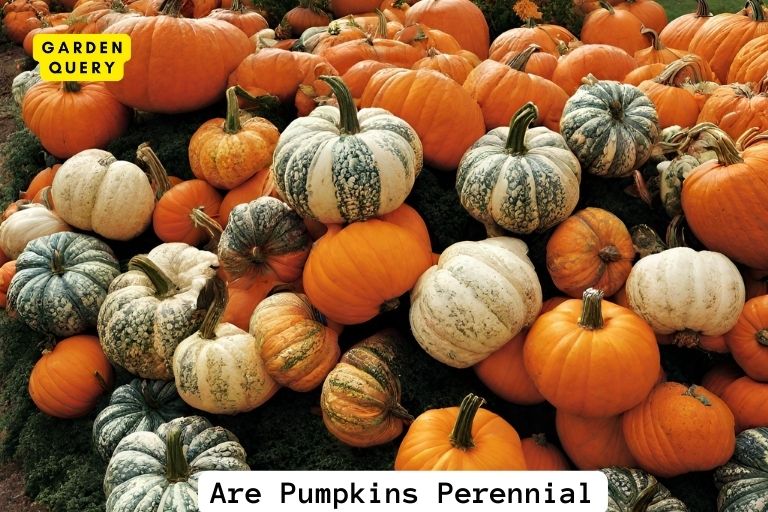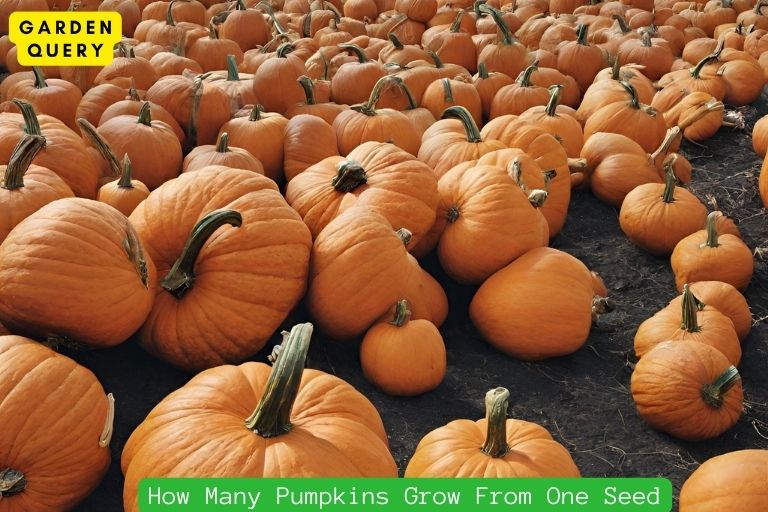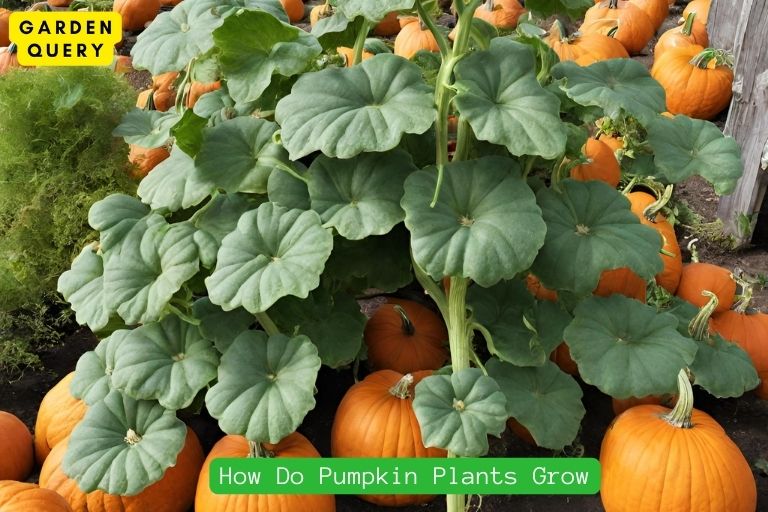Are Pumpkins Perennial?
No, pumpkins are not perennial plants; they are annuals, completing their life cycle in one growing season.
Pumpkins belong to the Cucurbitaceae family and are typically grown as annuals. As warm-season plants, pumpkins thrive in the spring and summer, producing fruits within a single growing season. While perennial in warmer climates, in regions with frost, pumpkins are cultivated as annuals due to the colder temperatures affecting their growth.
The pumpkin plant germinates from seeds, grows, flowers, produces fruits, and completes its life cycle within a year. Understanding the annual nature of pumpkins is crucial for planning and optimizing their cultivation.
Key Takeaway
Pumpkins Perennial
For those who love gardening or have an interest in plants, the question of whether pumpkins are perennial or not may come to mind. Understanding the lifecycle and characteristics of plants can help answer this question and provide valuable information for gardeners and enthusiasts.
What are Perennial Plants?
Perennial plants are plants that can live for more than two years, compared to annual plants that complete their lifecycle within one growing season. These plants have the ability to survive through different seasons and continue to grow year after year. Many gardeners prefer perennial plants because they require less maintenance and provide beauty and color to gardens for an extended period.

Definition of perennial plants
Perennial plants are defined as plants that live for at least three years or more. They can continue to grow and bloom each year without needing to be replanted. Some examples of perennial plants include flowers like roses, geraniums, and peonies, as well as trees and shrubs like oak trees and junipers.
Characteristics of perennial plants
Perennial plants possess certain characteristics that allow them to survive longer and effectively adapt to their environment. Here are some key characteristics of perennial plants:
- Deep root systems: Perennial plants have extensive root systems that allow them to access water and nutrients from deep within the soil. This helps them survive periods of drought or harsh weather conditions.
- Dormancy: Perennial plants have the ability to go into a dormant stage during unfavorable conditions such as winter. During this period, they conserve energy and focus on root development rather than above-ground growth.
- Adaptability: Perennials are well-adapted to their specific climates and can withstand a wide range of temperatures, precipitation levels, and soil conditions. This adaptability makes them resilient and able to thrive in various environments.
- Continuous growth: Unlike annual plants that focus solely on producing seeds for the next generation, perennial plants continue to grow and expand each year. They often spread through rhizomes, bulbs, or stolons, allowing them to create larger clumps or colonies over time.
- Longevity: Perennial plants have the capacity to live for many years, with some species living for decades or even centuries. This longevity gives them the opportunity to establish deep root systems and develop stronger and more extensive foliage.
In summary, perennial plants are those that have the ability to live for multiple years and continue growing and blooming without the need for replanting. They possess characteristics such as deep root systems, adaptability, and continuous growth that enable them to survive and thrive in various environments. Understanding these characteristics can help gardeners choose the right plants for their gardens and appreciate the beauty and resilience of perennial plants.
Different Types of Pumpkins
When it comes to pumpkins, most people associate them with autumn, Halloween, and pumpkin spice lattes. But have you ever wondered if pumpkins are perennial? Let’s find out!
Varieties of pumpkins
Pumpkins come in various shapes, sizes, and colors. From the classic orange jack-o’-lantern pumpkins to the small and sweet sugar pumpkins, there is a wide range of choices. Other popular varieties include the Cinderella pumpkin, which resembles the fairy tale carriage, and the white ghost pumpkin with its ghostly pale skin.
It’s important to note that all these varieties are from the same plant species, Cucurbita pepo. However, within this species, there are different cultivars that have been selectively bred to develop specific characteristics, such as size, flavor, or color.
Seasonal availability of pumpkins
Now, let’s get back to the original question: Are pumpkins perennial? The answer is no. Pumpkins are not perennial plants; they are annuals.
Pumpkin plants have a life cycle that lasts for one growing season. They are typically planted in the spring, grow throughout the summer, and reach maturity in the fall. After the pumpkins are harvested, the plants die off. This means that pumpkins need to be replanted each year to continue growing.
However, it’s worth noting that pumpkins can reseed themselves under certain conditions. If a pumpkin is left in the garden to decompose, the seeds inside it may germinate and grow into new plants the following year. This can give the impression that pumpkins are perennial, but in reality, it’s just the offspring of the previous year’s plant.
Pumpkins thrive in warm climates with plenty of sunlight and well-drained soil. They require regular watering and benefit from the addition of organic matter, such as compost, to improve soil fertility. In colder climates, it’s best to start pumpkin seeds indoors and transplant the seedlings outdoors once the danger of frost has passed.
In conclusion, while pumpkins are not perennial plants, they offer a delightful and decorative addition to the autumn season. So, whether you’re carving a spooky jack-o’-lantern or using pumpkins in your favorite recipes, enjoy the seasonal abundance of this versatile vegetable.
Are Pumpkins Perennial Plants?
Clarifying the perennial nature of pumpkins
It’s that time of the year again when pumpkins take center stage in fall decorations and holiday recipes. But have you ever wondered if pumpkins are perennial plants?
Contrary to popular belief, pumpkins are not classified as perennial plants. Instead, they fall under the category of annual plants. Annual plants complete their life cycle within one year, from germination to flowering and fruiting, and ultimately, dying off. Pumpkins belong to the Cucurbitaceae family, which includes other plants like cucumbers, melons, and gourds.
Pumpkins are typically grown as warm-season crops, with seeds being planted in late spring or early summer. They require warm soil and plenty of sunlight to thrive. From seed to harvest, pumpkins typically take around 75 to 100 days to reach maturity. Once harvested, the fruit can be used for a variety of culinary purposes, such as pumpkin pie, soups, and roasted pumpkin seeds.
Factors influencing the classification of pumpkins
- Life Cycle: As mentioned earlier, pumpkins have an annual life cycle. They complete their growth, reproduction, and death within one year. This means that every year, new seeds need to be planted to continue growing pumpkins.
- Frost Sensitivity: Pumpkins are highly sensitive to frost. Even a light frost can damage the plant, leading to its demise. This sensitivity to cold temperatures further supports the classification of pumpkins as annual plants.
- Seed Production: Pumpkins produce seeds inside the fruit, similar to other annual plants. These seeds can be harvested and used for planting new pumpkin crops the following year. The need for new seeds each year reinforces the annual nature of pumpkins.
It’s important to note that some pumpkin varieties may exhibit reseeding abilities, meaning their seeds can germinate and produce new plants without human intervention. However, this does not change the fact that each individual plant has a single-year life cycle.
Pumpkins are a much-loved symbol of the fall season and are widely cultivated for their ornamental and culinary uses. Their large, vibrant fruits and versatility in cooking make them a popular choice for autumn decorations and seasonal dishes. While they may not be perennial plants, their annual status allows for the joy of growing and harvesting fresh pumpkins each year.
In conclusion, pumpkins are not perennial plants. They are classified as annual plants due to their one-year life cycle, sensitivity to frost, and the need to replant seeds each year. However, their popularity and widespread cultivation make them a cherished part of the fall season for many people. So, next time you’re indulging in pumpkin-spiced treats or decorating your porch with pumpkins, remember their annual journey from seed to harvest.
Growing Pumpkins
When it comes to gardening, pumpkins are a popular choice for many enthusiasts. But have you ever wondered if pumpkins are perennial plants or not? Let’s dive into the topic and explore the world of growing pumpkins.
Tips for growing pumpkins
If you’re interested in growing your own pumpkins, here are some helpful tips to get you started:
- Choose the right variety: There are many different varieties of pumpkins available, so make sure to select the one that suits your climate and preferences. Some varieties are better suited for cooler climates, while others thrive in warmer regions.
- Start seeds indoors: It’s recommended to start your pumpkin seeds indoors about two to four weeks before the last frost date in your area. This will give the plants a head start and ensure a longer growing season.
- Prepare the soil: Pumpkins prefer well-drained soil with a pH between 6 and 7. Amend the soil with compost or organic matter to improve its fertility and drainage. Ensure that the soil is loose and free from weeds.
- Give them space: Pumpkins need plenty of space to spread out and grow. Make sure to provide at least 6 to 8 feet of space between each plant. If you have limited space, you can also consider growing them vertically using trellises or fences.
- Provide adequate water: Pumpkins require regular watering to keep the soil consistently moist. Aim to water them deeply once a week, especially during dry spells or hot weather. Avoid overwatering, as it can lead to root rot.
- Protect from pests: Pumpkins are susceptible to various pests, including squash bugs, vine borers, and powdery mildew. Use organic pest control methods like handpicking pests, applying neem oil, or using insecticidal soap to protect your plants.
- Harvest at the right time: Harvest your pumpkins when they have reached their full color and the stems have started to dry out. Cut the pumpkins off the vine, leaving a few inches of stem attached. Store them in a cool, dry place for long-term storage.
Challenges and considerations
While growing pumpkins can be a rewarding experience, there are a few challenges and considerations to keep in mind:
- Seasonal growth: Pumpkins are not perennial plants; they are annuals that complete their life cycle in one growing season. This means you will need to replant them each year if you want to continue growing pumpkins.
- Space requirements: Pumpkins are known for their sprawling vines and large leaves, so make sure you have enough space in your garden to accommodate their growth. If space is limited, you can try growing smaller or compact varieties.
- Pollination: Pumpkins rely on pollinators like bees for successful fruit set. If you notice a lack of bees in your area, you may need to hand-pollinate your pumpkin flowers using a small brush or cotton swab.
- Weather conditions: Pumpkins prefer warm temperatures and full sun, with daytime temperatures around 70-85°F (21-29°C). If you live in a cooler climate, consider using row covers or plastic tunnels to extend the growing season.
In conclusion, growing pumpkins can be a fun and rewarding experience for gardeners of all levels. By following these tips and considering the challenges, you can enjoy a bountiful harvest of delicious pumpkins. Remember, while pumpkins are not perennial plants, the joy of growing them each year can be truly satisfying. Happy pumpkin gardening!
- Best Therapists In Dallas - February 1, 2024
- Holly Willoughby Husband: Holly Willoughby’s Love Story - January 30, 2024
- Holly Willoughby Dress: 5 Style Secrets and 7 Must-Know Career Milestones - January 30, 2024





